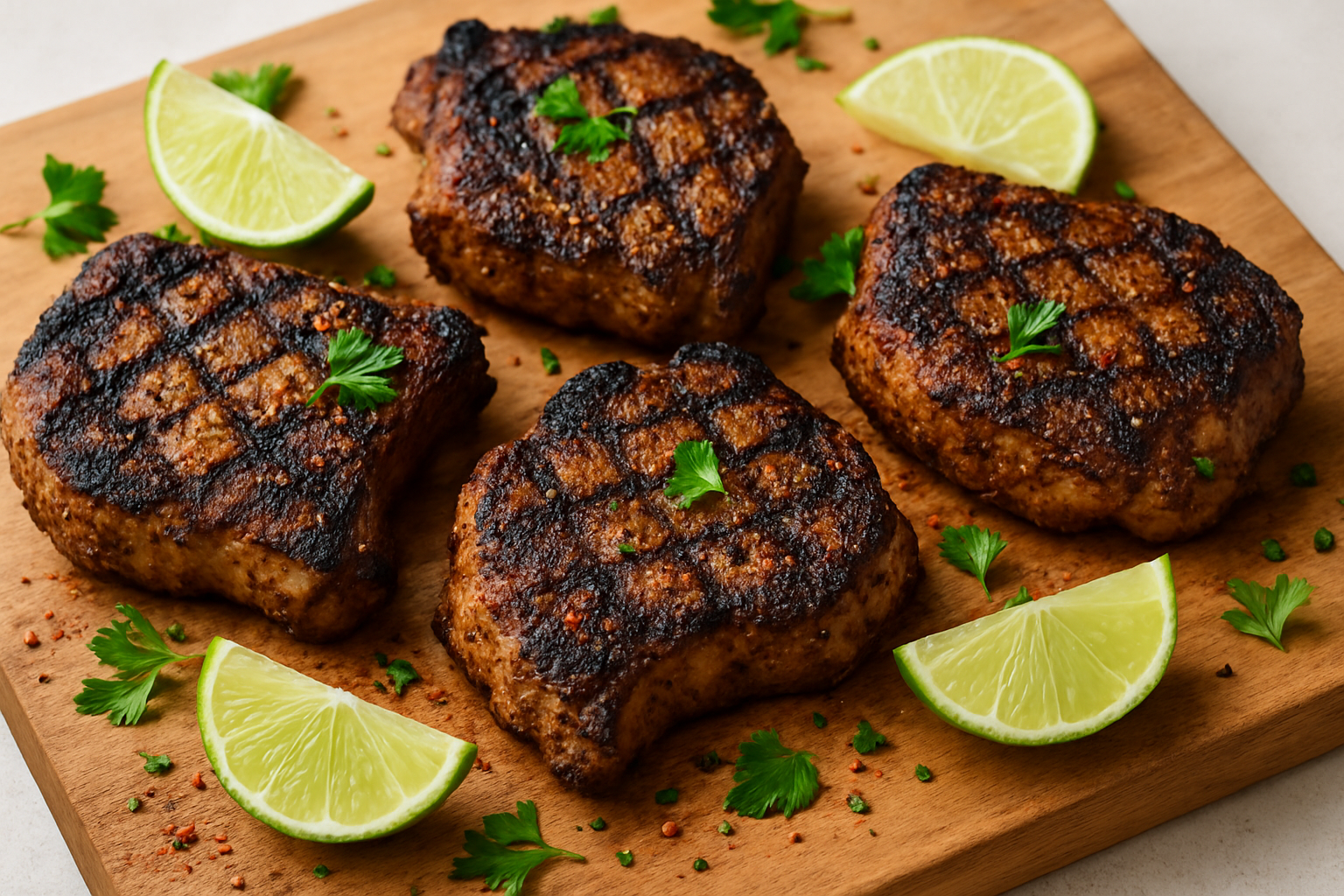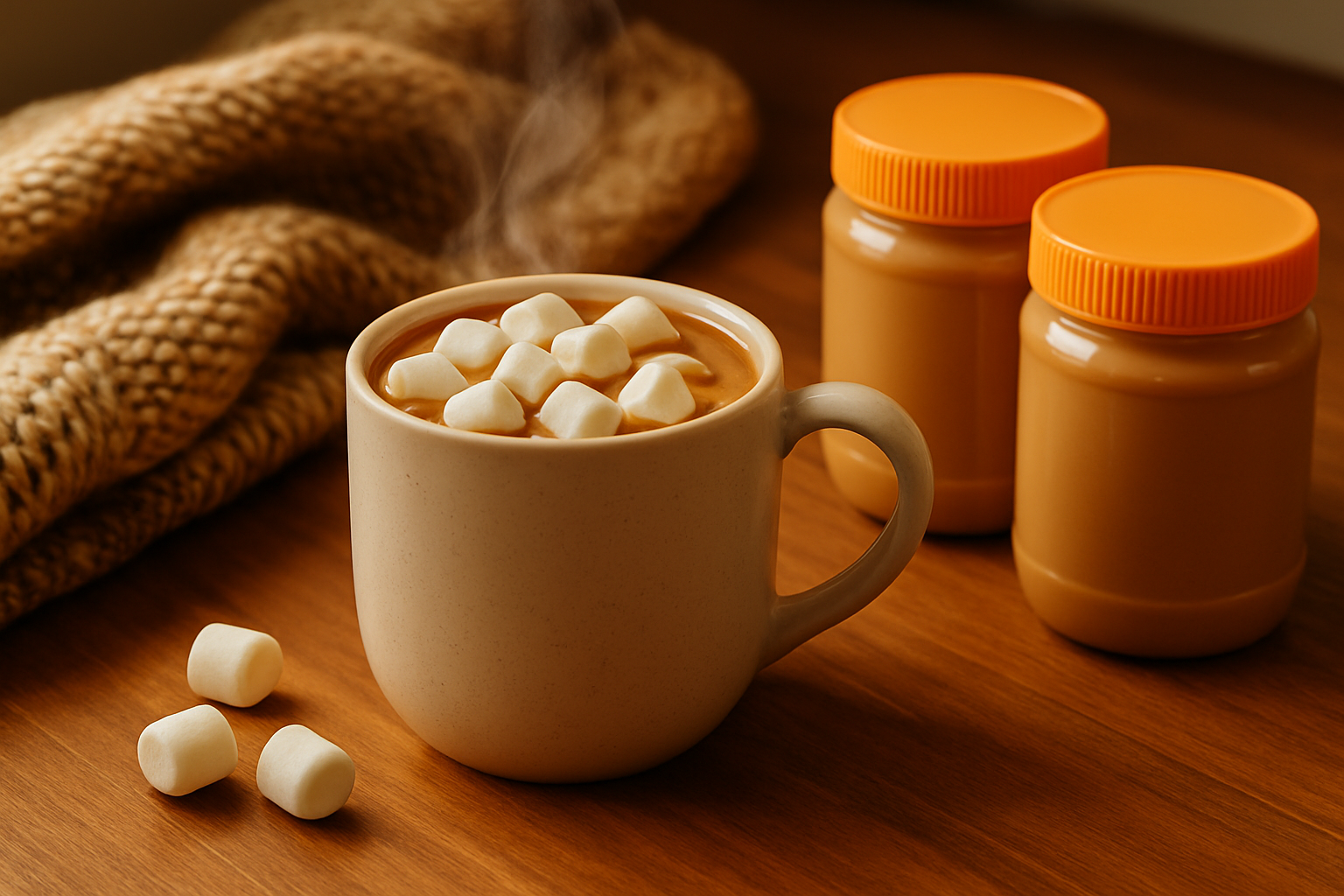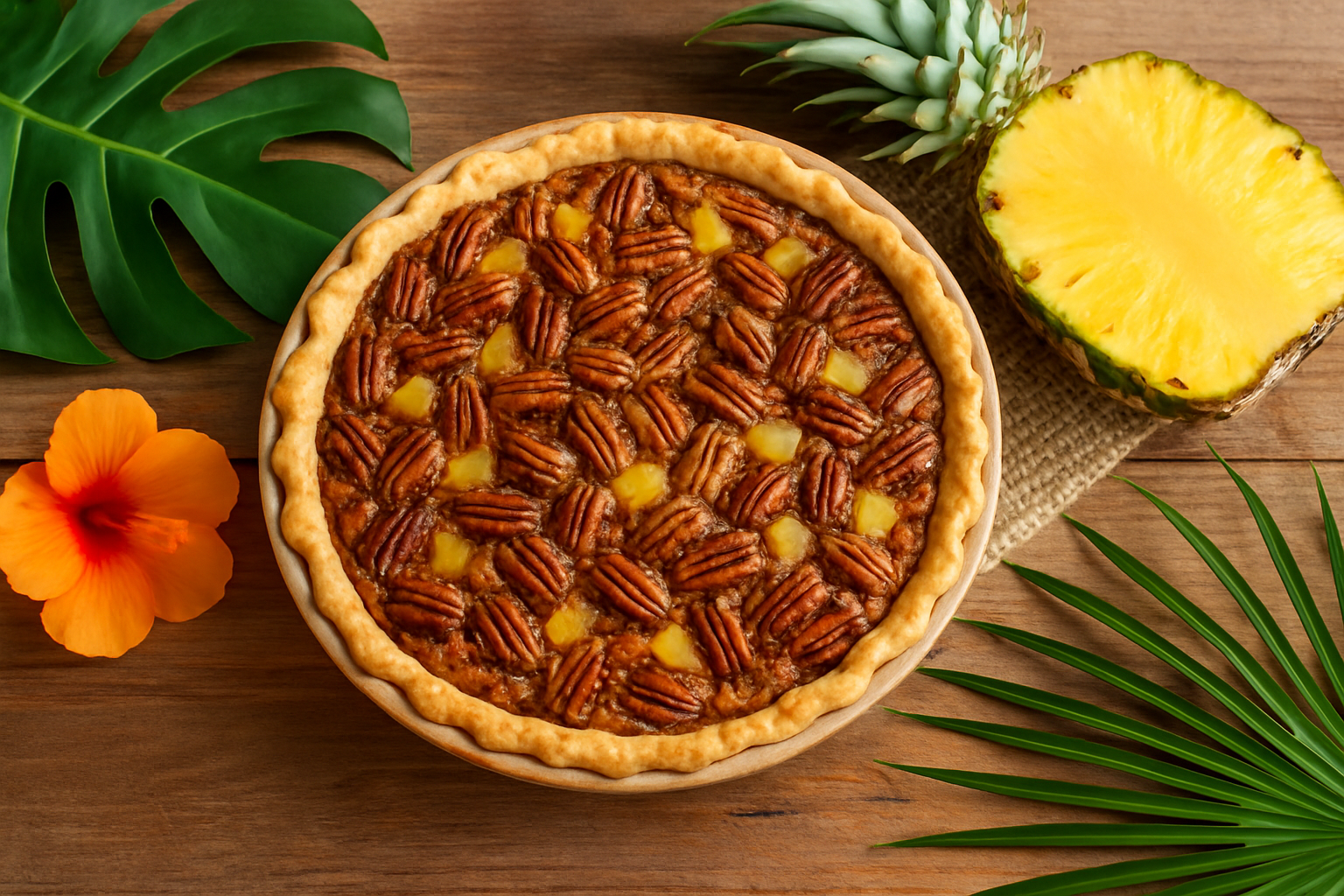Hot Pot Seafood Cooking Times That Prevent Overcooking
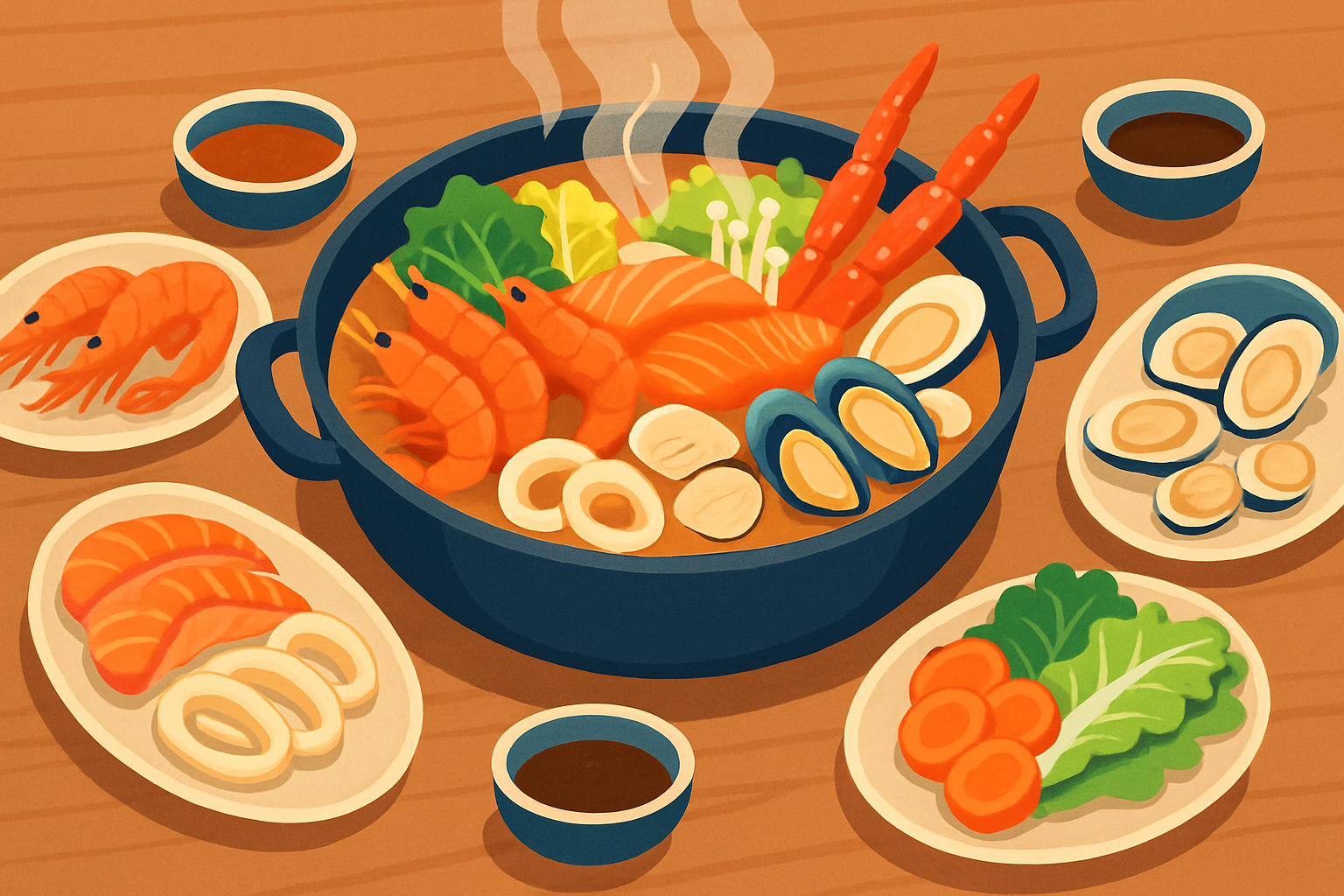
Nailing the timing when cooking hot pot seafood is absolutely important for unlocking its bright textures and fresh flavors. Cooking it just right keeps the seafood tender and juicy, avoiding the all-too-common pitfall of overcooking that turns it rubbery or dry—something I’ve definitely learned the hard way. Since hot pot seafood is delicate and cooks in a flash, keeping a close eye during prep not only boosts the taste but also ensures everything stays safe to eat.
Hot pot is a beloved tradition focused on gathering around the table and sharing the joy of cooking together with regional spins like fiery Sichuan, mellow Cantonese and delicate Japanese Shabu-Shabu. Seafood usually steals the show here, prized for how quickly it cooks and its bright fresh flavors.
Getting to Know Seafood in Hot Pot Varieties and Key Traits
Seafood truly shines in hot pot, bringing a fresh taste that’s hard to beat. From delicate fish fillets that melt in your mouth to bouncy shrimp that add a satisfying snap, each variety plays its own starring role. And let us not forget about clams and mussels, their briny flavors bubbling up in the broth like little treasures. Knowing these key traits helps you pick the perfect combo, turning your hot pot experience from good to unforgettable. Trust me, once you get the hang of it, each dip feels like a mini celebration for your taste buds.
Seafood options for hot pot cover a wide range but often include fish fillets, shrimp, scallops, mussels, crab, squid and clams. Each one brings its own unique texture and thickness and requires a bit of patience with cooking time. Thin fish fillets tend to cook in a flash and usually turn out tender. Crab legs take longer but are worth the wait to savor that sweet juicy meat.
- Fish fillets have delicate flakes that cook in the blink of an eye and tend to fall apart if you leave them on the heat a moment too long.
- Shrimp boast a firm, slightly sweet flesh that cooks up quickly but can turn rubbery if you’re not careful and let them linger.
- Scallops are wonderfully tender with a buttery texture. A quick sear is the trick to keeping them juicy and melt-in-your-mouth.
- Mussels pop open as they cook and release flavorful juices that give broths a comforting, savory kick.
- Crab legs and claws come with thick shells that need a longer cooking time to bring out all that sweet, tender meat inside.
- Squid rings cook in no time flat, but be warned—they can turn rubbery faster than you’d like if you blink.
- Clams open up when steamed which is a natural signal they’re ready and they add a nice salty punch to any broth.
Understanding Cooking Times and Why Nailing the Timing Matters for Hot Pot Seafood
Seafood proteins are notoriously sensitive to heat. Their delicate muscle fibers tend to break down pretty quickly, which often leads to moisture loss and a tougher texture if you happen to overcook them. When they’re hit with high temperatures all at once, that tender flesh can turn rubbery or dry faster than you might expect.
Undercooking seafood can carry some food safety risks, especially when it comes to bacterial contamination with shellfish and fish.
"Nailing seafood in hot pot is really a juggling act—cooked just enough to be safe, but not so long that those delicate textures fade away into nothing. It’s a dance of timing, fresh ingredients, and a keen eye. I’ve found the magic’s in the little details." — Chef Li Wei, Seafood Specialist
Key Factors That Affect Just How Long Seafood Takes to Cook in Hot Pot
- The thickness and size of seafood pieces determine the cooking speed and how heat moves through each bite.
- Keeping the broth at a steady temperature is important for even cooking. Sudden swings might leave some parts barely cooked and others totally overdone.
- The type of hot pot broth you choose — whether spicy, alkaline or mild — affects the cooking process and timing.
- Whether your seafood starts frozen or fresh can greatly change how long it takes to reach perfect doneness.
- Personal taste plays a big role. Some people like their seafood a bit rare while others prefer it firm, so cooking time needs adjustment.
- The quality of your cooking gear makes a big difference in how evenly heat is distributed and controlled during a hot pot feast.
Each factor plays a key role in getting the right cooking times for hot pot seafood. Thicker pieces need more patience and should stay in the pot longer. Thin slices can easily overcook if you are not careful. Keeping the broth at a steady rolling boil speeds things up, but if it bubbles like a mini volcano it can ruin those delicate ingredients. Fresh seafood usually cooks faster than frozen so it is smart to adjust your timing and watch closely. Matching the broth style with your seafood is not just a fancy idea—it helps the flavors come alive and makes everything tender. And let us not forget that good quality cookware spreads heat evenly and makes a big difference.
A Handy Guide to Nailing the Perfect Cooking Times for Your Favorite Hot Pot Seafood
A handy detailed guide on cooking times for popular hot pot seafood ingredients. Think of these timings as a helpful jumping-off point—they might need fine-tuning depending on how hot your broth is, how fresh the seafood is or how you like your texture. Watching for telltale signs like color shifts, shells popping open or the flesh firming up can really help you nail the timing and avoid overcooking disasters.
| Seafood Type | Suggested Cooking Time Range (seconds) | Optimal Doneness Indicators | Common Mistakes | Cooking Tips |
|---|---|---|---|---|
| Fish Fillets | 15-45 | Flesh looks opaque and flakes separate easily | Overcooking turns it into a mushy mess | Go for thinner cuts and steer clear of boiling too long |
| Shrimp & Prawns | 30-60 | Shell turns a nice pink, flesh feels firm to the touch | Leaving them in too long makes them tough as boots | Peel the tails off for even cooking every time |
| Scallops | 20-40 | Surface goes opaque, tender with a slight springy bounce | Overcooking leads to that dreaded rubbery chew | Cook them fast and get them off the heat pronto |
| Mussels | 60-90 | Shells pop open fully, juices run crystal clear | Cooking any stubborn unopened shells can bring off-flavors | Toss any shells that stay closed after cooking—no second chances |
| Crab Legs & Claws | 90-180 | Shell brightens to a vibrant red, meat piping hot all the way through | Undercooking means cold spots lurking inside | Pre-cracked shells are a lifesaver to speed things up |
| Squid Rings | 15-30 | Flesh firms up nicely without turning into rubber | Overcook and you’ll end up with chewy trouble | Keep it brief and keep a close eye on them |
| Clams | 60-90 | Shells open wide, juices look clear and fresh | Overcooking dries the sweet meat out | Give them a good rinse before cooking – clean shells cook better |
Fish Fillets
There's something comforting about a good fish fillet—crispy on the outside, tender and flaky inside. Whether you pan-fry them to a golden brown or bake them with a spritz of lemon and herbs, fish fillets are the kind of dish that feels like a little celebration on your plate. And let us be honest, they’re versatile enough to suit pretty much any mood or occasion.
Thin fish fillets usually take around 15-25 seconds to cook until the flesh turns opaque and flakes apart nicely. Thicker fillets need a bit more patience about 40-45 seconds. Adding the fish near the end helps keep it tender and intact, so you get that perfect flaky texture without everything falling apart.
A Closer Look at Shrimp and Prawns That Might Surprise You
Shrimp and prawns usually cook up in just about 30 to 60 seconds flat. You’ll spot they’re ready the second their shells blaze a bright pink and the flesh feels firm yet still juicy—not a hint of toughness in sight.
Scallops
There's something undeniably charming about scallops, is not there? These little sea treasures do not just bring a touch of elegance to a plate; they deliver that sweet, delicate taste that can absolutely make a meal memorable. Whether seared to a golden crisp or gently poached, scallops have this way of melting in your mouth that few can resist. I have found that with a bit of butter, garlic, and perhaps a splash of lemon, they are pretty much irresistible. Not to mention, they cook faster than you can blink—perfect for those nights when you want something fancy without spending hours in the kitchen.
Scallops cook amazingly fast, usually in just 20 to 40 seconds. Cooking them quickly is key to preserving the delicate buttery texture that makes them so delightful. Leave them in the heat too long and they lose their moisture, turning rubbery—no one wants that.
A delightful catch from the sea that’s as humble as it is tasty
Cook mussels and clams until their shells pop open, usually in about 60 to 90 seconds—blink and you might miss it. Giving them a good scrub beforehand helps shake off stubborn grit. If you find any shells still closed after cooking, it’s safest to toss them out—better safe than sorry when it comes to food safety.
Crab and Crab Legs A Delight Worth Every Pinch
Crab legs and claws usually need a little extra TLC in the cooking department—about 90 to 180 seconds to warm through the stubbornly thick shells and tender meat inside. Getting the timing right is key. Cook them too briefly and you’re left with chilly bites. If you cook them too long the meat becomes dry and less appealing.
Squid and Cuttlefish Masters of the Underwater Stage
Squid and cuttlefish need a quick turn in the heat, usually just 15 to 30 seconds. Otherwise, they start to throw a tantrum and turn tough and rubbery. Their texture changes in a flash as the heat works its magic on their muscle fibers, flipping from tender to chewy faster than you’d expect. You’ll see the flesh go opaque and curl up slightly—those are your green lights to pull them out.
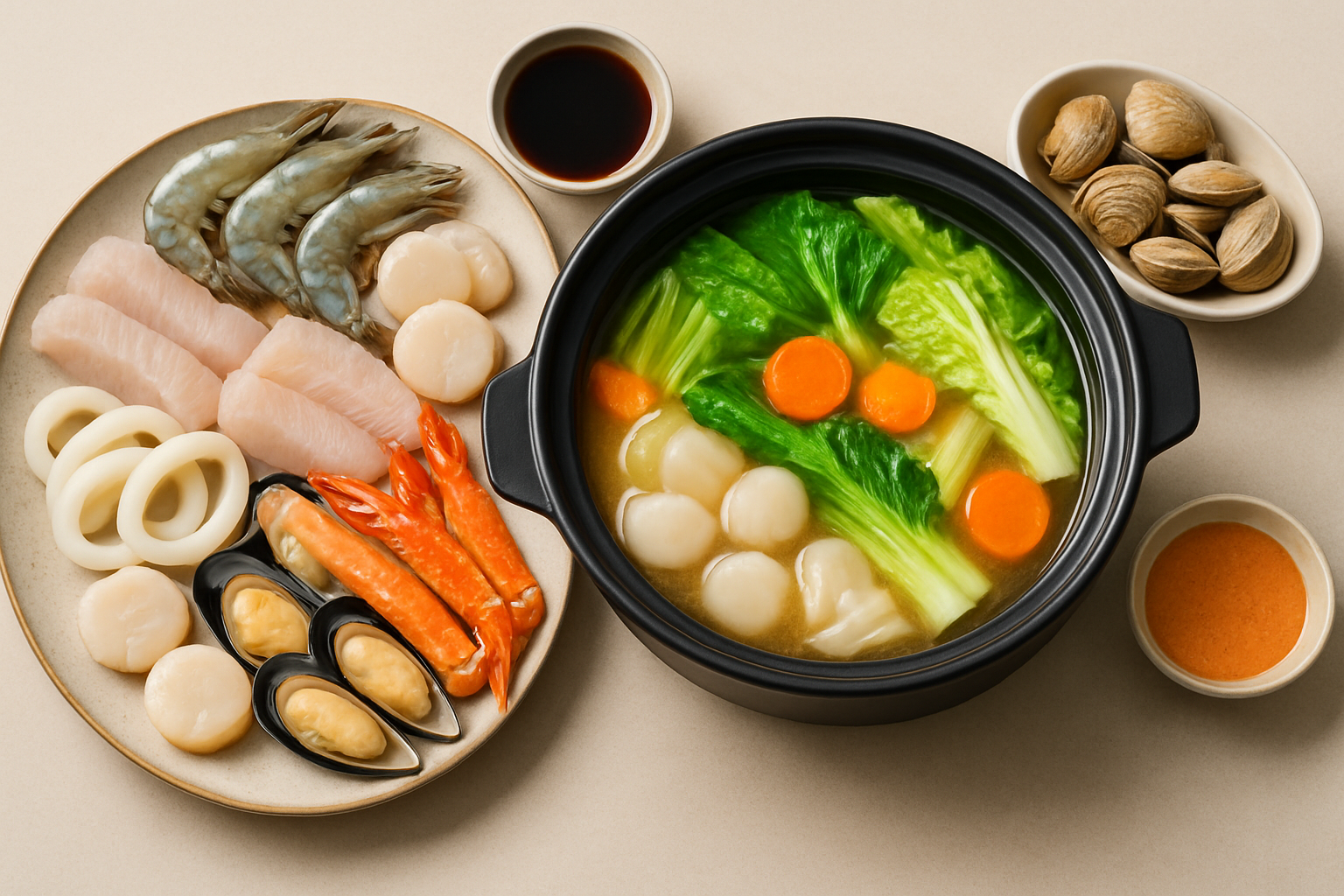
An inviting hot pot spread showcasing a variety of fresh seafood and vegetables ready for cooking.
Step-by-Step Guide to Cooking Seafood Perfectly in Hot Pot Every Single Time
Start by giving all the seafood a good once-over and clean it thoroughly to wash away any grit, scales or stubborn shells—no one likes a surprise crunch.
Bring the hot pot broth to a lively rolling boil so everything cooks evenly. Take it steady as she goes because that’s the name of the game here.
Toss the seafood into the broth according to their cooking times. Begin with the slowpokes that need a bit more patience.
Keep a keen eye on the clock and add each type of seafood right on cue. A kitchen timer can be a lifesaver to avoid any overcooked mishaps.
Watch for visual hints like a change in color or shells popping open. Give a gentle poke to check firmness—it’s a bit like reading the room but for seafood.
Fish out each piece as soon as it’s perfectly cooked. Residual heat is sneaky and can turn a masterpiece into a rubbery mess.
Serve it right away alongside your favorite dipping sauces so you can savor every bit of that fresh flavor and delightful texture.
Leaning on precise tools like digital timers or those nifty smart kitchen gadgets can really take the pressure off when it comes to managing cooking times. Freshness is the real deal here—always go for top-notch seafood and be sure to store it properly ahead of time.
Troubleshooting Common Head-Scratchers When Cooking Seafood in Hot Pot
- Seafood that ends up rubbery usually means it was pushed past its limit—either overcooked or the broth got too hot.
- If your seafood still feels underdone, chances are it didn’t spend enough time cooking or the heat fluctuated too much.
- When seafood starts to fall apart like it’s giving up on life, that’s often because it’s been in the pot too long or handled roughly—gentle hands win here.
- Seafood sticking together? That’s a classic case of overcrowding the pot or not stirring the broth enough.
- Sneaky temperature swings in the broth cause uneven cooking, so aiming for a steady rolling boil usually does the trick.
Catching problems early lets you jump in and fix things on the fly whether that’s dialing down the heat to avoid a rubbery texture or cooking a bit longer if the seafood isn’t quite done. You can also toss in smaller portions and give the broth a good stir to prevent sticking and uneven cooking.
Advanced Tips and Clever Twists for Cooking Seafood Hot Pot
Give marinating different types of seafood a try to bring out subtle layers of flavor before cooking—it really makes a difference. Don’t underestimate the power of dipping sauces like soy, sesame or a spicy chili kick because they can seriously take the taste up a notch. When it comes to broth, whether you’re choosing a fiery Sichuan, a rich kombu or a cozy herbal blend, each one changes the flavor profile and affects how quickly the seafood cooks and absorbs those tasty seasonings.
Balance your hot pot menu by pairing hot pot seafood with quick-cooking veggies like spinach and mushrooms. Add thinly sliced root vegetables that usually cook at the same speed. It’s a good call to steer clear of piling in slow-cooking meats or heavy starches all at once because that can throw off your timing and leave you juggling pots like a circus act.


